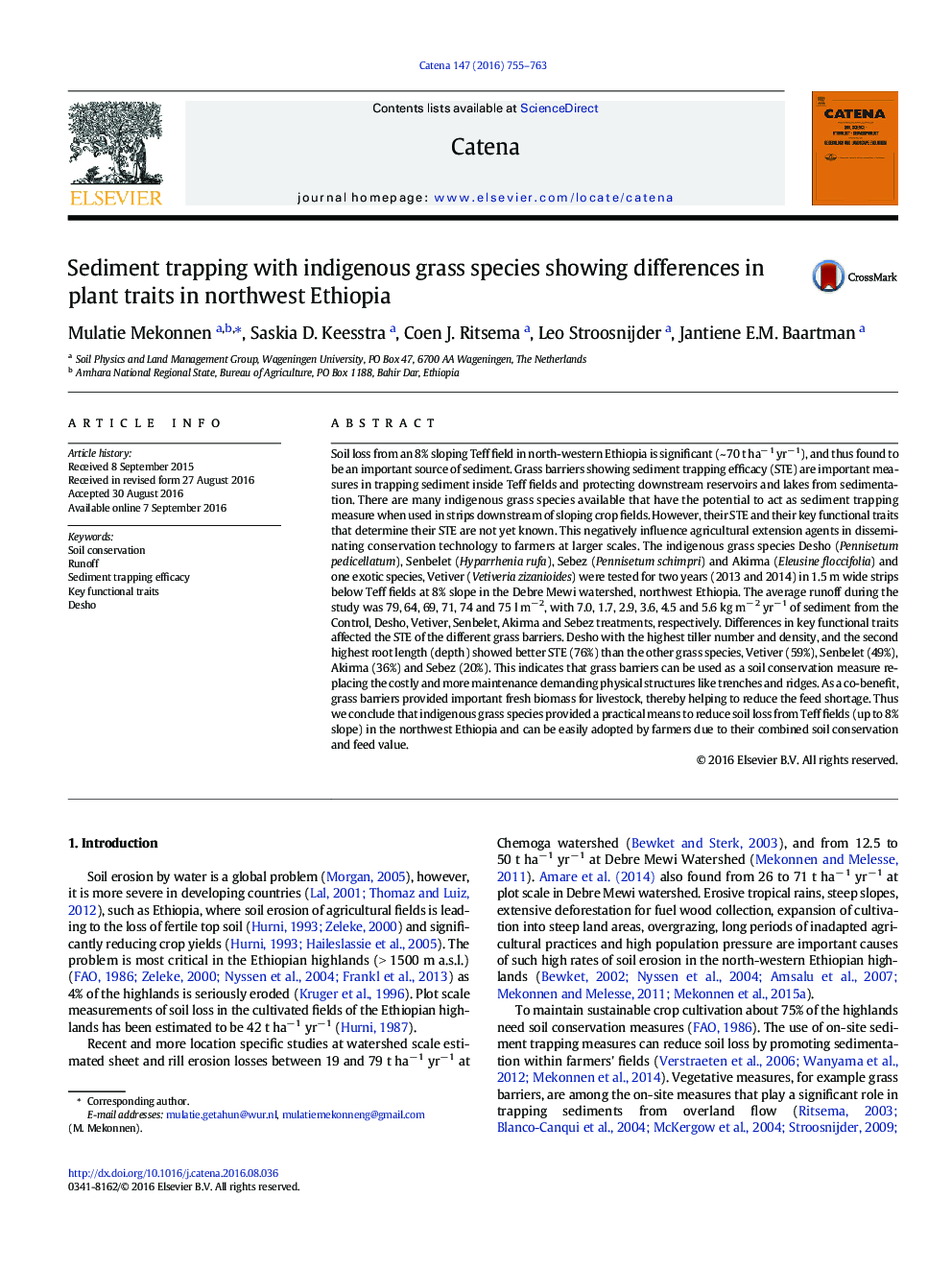| Article ID | Journal | Published Year | Pages | File Type |
|---|---|---|---|---|
| 6407809 | CATENA | 2016 | 9 Pages |
â¢Indigenous grass species provided a practical means to reduce on-site soil lossâ¢Indigenous grass species showed a promising result in trapping sedimentâ¢Differences in key functional traits affected the STE of indigenous grass barriers
Soil loss from an 8% sloping Teff field in north-western Ethiopia is significant (~ 70 t haâ 1 yrâ 1), and thus found to be an important source of sediment. Grass barriers showing sediment trapping efficacy (STE) are important measures in trapping sediment inside Teff fields and protecting downstream reservoirs and lakes from sedimentation. There are many indigenous grass species available that have the potential to act as sediment trapping measure when used in strips downstream of sloping crop fields. However, their STE and their key functional traits that determine their STE are not yet known. This negatively influence agricultural extension agents in disseminating conservation technology to farmers at larger scales. The indigenous grass species Desho (Pennisetum pedicellatum), Senbelet (Hyparrhenia rufa), Sebez (Pennisetum schimpri) and Akirma (Eleusine floccifolia) and one exotic species, Vetiver (Vetiveria zizanioides) were tested for two years (2013 and 2014) in 1.5 m wide strips below Teff fields at 8% slope in the Debre Mewi watershed, northwest Ethiopia. The average runoff during the study was 79, 64, 69, 71, 74 and 75 l mâ 2, with 7.0, 1.7, 2.9, 3.6, 4.5 and 5.6 kg mâ 2 yrâ 1 of sediment from the Control, Desho, Vetiver, Senbelet, Akirma and Sebez treatments, respectively. Differences in key functional traits affected the STE of the different grass barriers. Desho with the highest tiller number and density, and the second highest root length (depth) showed better STE (76%) than the other grass species, Vetiver (59%), Senbelet (49%), Akirma (36%) and Sebez (20%). This indicates that grass barriers can be used as a soil conservation measure replacing the costly and more maintenance demanding physical structures like trenches and ridges. As a co-benefit, grass barriers provided important fresh biomass for livestock, thereby helping to reduce the feed shortage. Thus we conclude that indigenous grass species provided a practical means to reduce soil loss from Teff fields (up to 8% slope) in the northwest Ethiopia and can be easily adopted by farmers due to their combined soil conservation and feed value.
